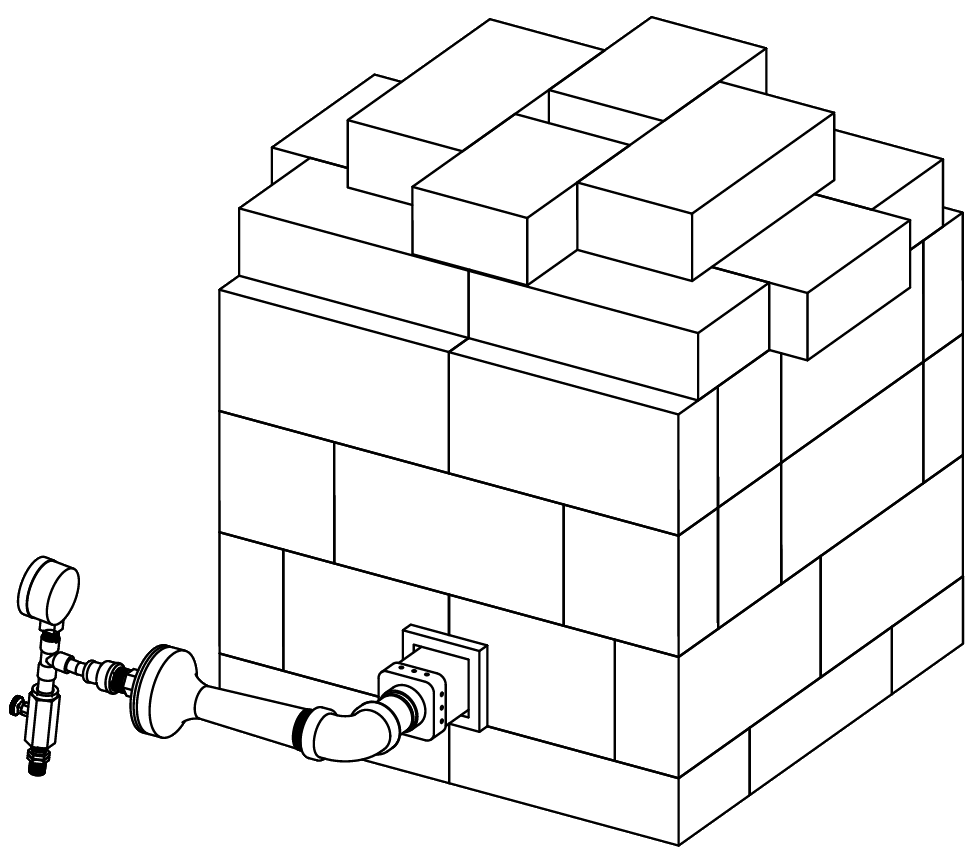| Burnout Firing to 1650 F March 31, 2018 Kiln Chamber is 12" x 12" x 16" h With a Combustion Chamber 4-1/2" h x 12" x 12" fired with 2-1/2" Mini Square Giberson (18 - 7/32") with #69 orifice |
||
| There are a few times in the year when this kiln idea saves my bacon. I have several kilns for firing things up, any one of which could be used if I were really forced to. But with this particular firing I had my big kiln still full of fired ware and the number of items (22 mini-square burner blocks and 7 burner heads) would overwhelm some of the smaller electric kilns. To build this kiln was the best solution. It was just a matter of unboxing the bricks and kiln furniture and connecting the propane. In all it takes just about a half an hour. Yes, I could put this up in a permanent spot but I really don't have the room, especially there in the driveway. So for me this is a great solution. With this kiln I can bisque pottery, glaze fire pottery, melt glass, burnout foundry molds for bronze pouring, or do other nifty things. But here I use it to clean up the wax from our casting operation of the ceramic burner heads, a project that goes on to meet external demands. | ||
|
||
Items To Make This Kiln:
Time to fire to 1650 deg. F. = 5-1/2 hours Storage Space = 10 Cubic Feet Fuel Used = 1/2 Gallon Propane |
||
This drawing shows how very simple this idea really is. One brick is stacked on top of another until it reaches a height enough to contain the items you want to fire or burn out. When I was a sculptural student at the Rhode Island School of Design we did our foundry work in the basement of the museum building and there we built loose brick burnout kilns for our bronze pours. Some of the structures were several feet tall and 5 or 6 feet in diameter and we would build the walls up and corbel them inward to make a kind of beehive top. Structurally sound? I don't know, but I never saw one of them fail. Showing a great deal of wisdom the school fathers moved the foundry into its own building sometime around 1970. I was long gone but I have frequently thought how we were all so lucky the entire museum didn't burn to the ground. |
 Sourcing Materials |
|